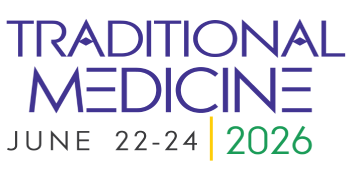Title : GC-MS analysis of bioactive compounds of extracts from M. angustifolia leaves and investigation of their antimicrobial and antioxidant activities
Abstract:
In this study, phytochemicals present in the leaves and stems were extracted using solvent extraction method, through the Soxhlet extractor, characterised on a Gas Chromatography-Mass Spectrometry (GC-MS). The antioxidant potential of the stem and leaves extracts of M. angustifolia were investigated using ABTS cation decolorization assay (ABTS), DPPH radical scavenging assay (DPPH), Total Reducing Power (TRP), Phosphomolybdate Assay for Total Antioxidant Capacity (PTAC) and Lipid Peroxidation Inhibitory Assay (LPA)
The phytochemical qualitative analysis using the Harborne standard methods showed the presence of alkaloids, saponins, flavonoids, phenols, reducing sugars and proteins. The GC-MS analysis of the extracts of M. angustifolia leaves revealed the presence of fatty acids, terpenes, higher alkanes, phenolic compounds, and alkenes. The leaf extract showed a strong antioxidant inhibitory activity (0.26mg/mL) against ABTS cation radical, DPPH radical, (0.31mg/mL) ferric ion (4.06mg/mL) and molybdenum (VI), 0.16mg GAE/g respectively. The kinetics studies of the lipid peroxidation of the extract fitted the pseudo second order model indicating that the kinetics results show that the inhibition of lipids peroxidation process depends on the concentration of both the plant extracts and the substrate (linoleic acid). The extracts of M. angustifolia extracts demonstrated antioxidant inhibitory activities that points to attraction it receives in traditional medical application in South Africa. The leaf extract showed a greater antibacterial activity compared to the stem extract with MIC values of 12.5 mg/mL against E. coli, 12.5 mg/ml against S. aureus, 6.3 mg/mL against P. aeruginosa and 6.3 mg/mL against S. enteritidis respectively. The stem extract showed no activity against the tested microorganisms. The leaf extract also showed moderate activity against C. albicans and C. neoformans with MIC values of 12.5 mg/mL for both the fungal species. In contrast to the leaf extract, the control antibiotic (ampicillin) and antifungal (griseofulvin) drugs did not show any activity against E. coli, S. aureus, P. aeruginosa and C. albicans, respectively. The heavy metal analysis showed the presence of Cr, Pb, As, Ag and Ni in low concentrations as follows: 0.0006 ppm, 0.00 ppm, 0.0005 ppm, 0.0010 ppm and 0.00 ppm respectively. The lower concentration of these heavy metals can be associated with the non-toxicity of M. angustifolia leaf extract due to their high concentrations.
The heavy metal analysis was conducted to ensure that the antifungal and antibacterial activity of the plant extracts is not due to the presents of heavy metals in the plant. These potent biological activities of M. angustifolia leaf extract observed confirms its traditional use in the treatment of skin infections and STI by the indigenous people of South Africa. This research project has managed to formulate and commercialize herbal products namely, MAS herbal tea, MAS herbal capsules, steaming herbs for cold & flu.
Keywords: M. angustifolia; GC-MS; DPPH radical scavenging assay (DPPH); antioxidant inhibitory activity




